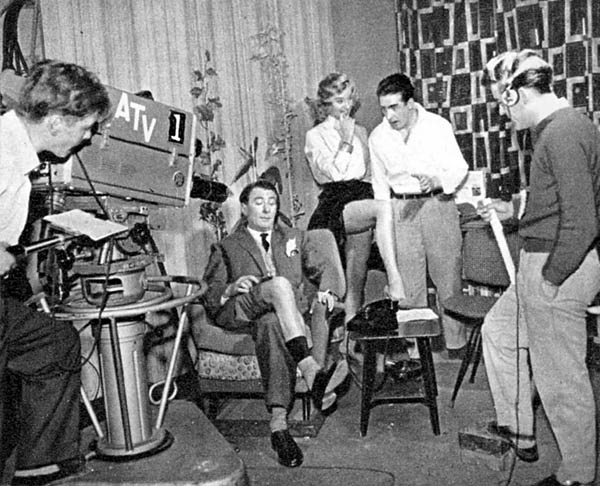Please note that this website is run on a non-profit basis for educational and research purposes. Images are credited with their respective copyright holders where they are known. You may not copy any image for commercial purposes. Please do not ask me for permission to use any images – that permission is not mine to give. If you are the copyright holder for an image and wish it to be removed, please contact me via the form at the foot of the page and I will of course be happy to do so. Also, if you are the owner of an uncredited image and wish to be named, again please contact me and I’ll happily add that information.
Before leaving ATV I must make a brief mention of Foley Street. I have been contacted by several people somewhat miffed that originally I hadn’t included Foley Street in this section’s history of ITV. The main reason was because I had tried to limit it to medium to large studios. However, the studio punched well above its weight and produced a remarkably varied output – not just continuity announcements.

ATV’s facilities at Britallian House (nobody in the industry ever called it that) in Foley Street opened in 1955 and the studio made its first programme on 24th September. It was ATV’s playout centre but was also used by ABC from February 1956. Ken Levon tells me that there were 2 MCRs – one for each company but they shared the 4 telecine machines and 2 caption cameras. This use of the facilities lasted until ATV and ABC agreed to share the Alpha TV studios in Birmingham.
There was indeed a small studio here which was originally intended to be used for continuity. One source states that the studio was only 23 x 25 ft but Richard Greenough has passed me a plan (see above) that shows its size as being 37 x 27 ft, which is not exactly tiny, although it certainly had very limited headroom. It opened with two Pye Image Orthicon cameras plus a spare and 20kW of lighting on 24th September 1955. The building was a central hub of switching between studios and contained several telecine machines manufactured by EMI and Pye enabling films of various gauges to be shown. The following from a 1957 edition of ‘Practical Television’ is an example of how Foley Street operated:
Here, for instance, is the control which enabled Granada’s “My Wildest Dream” to be televised from the stage at Hackney, via Highbury, Foley Street and the Museum Telephone Exchange, up to AR-TV at Wembley, where it was telerecorded. The telerecorded film was later put out at various I.T.A. stations at different times.
What is particularly interesting about the above is the level of cooperation between the different companies. For this one programme – Granada, ATV and Associated-Rediffusion all seem to have been involved in various ways.
Paul Faraday has sent me an interesting recollection of the studio…
‘When we started there it was only two cameras – The ‘Jack Jackson Show’ was done there, how I don’t know as they had dancers! After a while they removed a wall into a corridor, making the studio wider by three feet and installed a third camera. When video recording arrived there was no room in Foley Street so the machines were installed in a building around the corner in Ogle Street. We were told that our Advertising Magazine was the first programme to be video recorded by ATV and as there was no playback available in the Foley Street control room we all trouped round to Ogle Street to view a playback but the men in white coats wouldn’t let us in – they said it was a ‘clean area’ and nobody else was allowed in there!!’
Veteran lighting director Bill Lee has sent me his recollection of a visit to this studio…
‘ I was an enthusiastic admirer of the ‘Jack Jackson Show’ you mention and was astonished to find, when I had reason to visit Foley Street one day when it was in rehearsal, that it came from such a small studio of such limited space, as they continually found ways to give the impression of it taking place in a major production centre.’

Guy Caplin has also informed me that this studio produced a live Saturday night horror serial in the late ’50s. Euan Downing has pointed out that there were actually two studios here. The second was truly tiny and was used for continuity at weekends. He recalls that the guest artists appearing in Sunday Night at the London Palladium used the studio to promote their appearance.
As well as the programmes mentioned above, Ken Levon also remembers various ad mags, The Secret of Planet X (a 6 week serial – possibly the one mentioned above), Lunch Box on Fridays, a music programme called Blue Room and a weekly sport programme. Ken spoke to Alan Grahame, the vibes player in the Jerry Allen group. He told him it was quite a squeeze fitting 4 musicians, a singer, Noele Gordon and a camera crew into that tiny studio for a show called Musical Cheers.
Ken recalls that the studio went out on a high, anchoring the 1968 Olympic Games for ITV. At the end of the games, ATV having moved its continuity to Birmingham, Foley St was dismantled and all the equipment sold off.

